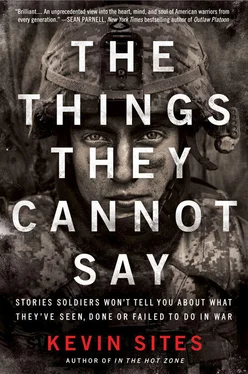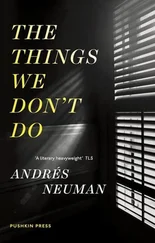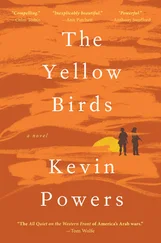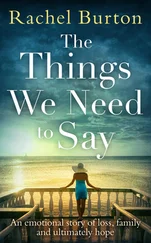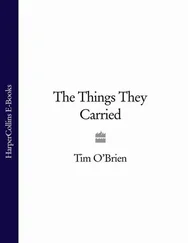Part IV: Deadly Honest Mistakes
What’s It Like to Kill Your Own Men or Civilians?
…all warriors and erstwhile warriors will need to understand that, just like rucksack, ammunition, water and food, guilt and mourning will be among the things they carry. They will shoulder it all for the society they fight for.
—Karl Marlantes, lieutenant, U.S.M.C. (Vietnam), author From
What It Is Like to Go to War , Karl Marlantes (Atlantic Monthly Press, 2011)
Chapter 7: Unfriendly Fire
If we had just come across them and the terrorists shot them up, it might not have affected us so much. But we were the ones who shot them.

Specialist Michael “Casey” Ayala, U.S. Army (left)
1st Battalion, 327th Infantry
The War in Iraq (2006)
Southwest of Baghdad in the cooling dusk of late November, a blue, Korean-made Bongo truck, commonly used by Iraqis to haul everything from goats to cinder blocks, was barreling toward Specialist Michael Ayala’s four-Humvee convoy. Though two football fields away, Ayala felt the vehicle was accelerating with bad intentions. His thoughts were confirmed when he saw muzzle flashes from the back of the speeding truck. His body and mind went through the natural physiological responses to imminent battle. His central nervous system’s hardwired “fight or flight” response was activated: adrenaline was released into his bloodstream, and he began breathing deeply to provide more oxygen to his body’s vital organs while blood was shunted away from the digestive tract to the muscles, providing them with the fuel for physical reaction. Ayala’s pupils dilated to give him a broader range of vision, his senses were heightened and his threshold for potential pain increased. This is the point for a civilian where the rational mind subsides and instinct takes over, but Ayala was a trained soldier. While biology could amplify his physical response, he couldn’t let fear overtake his mind. The thousands of muscle-memory repetitions of his training had to now give him the confidence to make rational choices even while his body was focused only on survival. He steadied himself and readied his weapon.
Seeing the rifle fire, the Humvees immediately took defensive positions, deploying like hidden bat wings; the two in the front pulled off at forty-five-degree angles to opposite sides of the road. The two in the rear did the same. It was how they trained, it was how they fought, and it was no longer a drill but a unit combat reflex. The forward vehicles prepared for a frontal assault; the back Humvees covered the unit’s six. Ayala, sitting in the rear passenger seat of the second Humvee, pushed open the heavy armored door, took cover behind it while aiming his M4 assault rifle at the oncoming truck. The soldier in the turret behind the Browning M2 .50 caliber machine gun did the same, as did the turret gunner in the lead Humvee with his M249 SAW light machine gun.
Ayala braced himself. It had only been a little more than a month since his unit arrived in Iraq, but the nineteen-year-old soldier had already seen plenty of war’s unyielding violence. A roadside bomb killed a friend of his from their mutual hometown in East Texas, ripping both his legs off in the blast. Ayala nearly lost his own life in another incident when a bomb exploded on a rooftop where he was standing.
Now, in this moment, there was more to come. The Bongo was getting closer, with the driver showing no indications of slowing down.
“That’s when the fifty-cal gunner on our vehicle opened up on it,” says Ayala. The M249 SAW gunner did the same. The windshield on the Bongo exploded into hundreds of shards as the thumb-sized .50 caliber rounds, able to penetrate solid engine blocks, pierced through the glass, followed by a string of 7.62s fired from the SAW, which can unload at a rapid-fire rate of two hundred rounds per minute. The truck careened off the road and slammed into a nearby tree, which might as well have been a brick wall. It was an instant and irreversible stop. Ayala, with a good angle on the Bongo, aimed his M4 and fired a few shots into the smoking vehicle. Keep them contained, he thought to himself. He was feeling good, believing they might have gotten the insurgents who had been dropping mortars and harassing fire into Camp Striker for weeks.
“But then my PL [platoon leader] started yelling, ‘Cease fire, cease fire,’ after a guy in the bed of the Bongo truck slipped over the side rails and tried to find cover in a ditch,” says Ayala.
When the platoon leader moved to take a closer look he called for the medics. Ayala, one of the unit’s combat first responders, trained to assist in providing lifesaving medical care in tandem with medics or until they arrive, grabbed his trauma kit and ran toward the carnage. What he saw there haunts his dreams even now, years later.
I first met Michael Ayala in early November 2005, a few weeks before this incident and almost exactly a year after Operation Phantom Fury in Fallujah in 2004, in which I had recorded the mosque shooting. I had returned to Iraq as a part of my Hot Zone project for Yahoo! News and was embedded with soldiers from the 101st Airborne Division out of Camp Striker, a support base for the large Camp Victory complex near the Baghdad airport. Ayala’s unit, 3rd Platoon of Alpha Company, had just spent a week combing through the potato and onion fields just south of the airport when Staff Sergeant David Crispen saw something on the ground: a raw potato that someone had been hungry or bored enough to chew on. Crispen also noticed some loose dirt next to the potato that “just didn’t look right.” They borrowed a shovel from one of the nearby houses and hit metal with the first spadeful of dirt. Along with some belt-fed ammunition, they dug up forty 155 mm artillery shells, all wrapped in plastic to protect them from corrosive sand and moisture.
Artillery shells like the 155 were a favorite of Iraqi insurgents, who usually daisy-chained them together for greater explosive power when building roadside bombs. Ayala and the other soldiers were pumped by their discovery. Roadside bombs caused more deaths and injuries in Iraq than any other insurgent weapon. With a little old-fashioned detective work, they found the cache, and because of it, knew they had saved lives. For me, it was a solid story, frontline grunts following their own instincts and disrupting insurgents without shedding a drop of blood, complete with video of a massive “controlled det,” military jargon for blowing up enemy weapons in place.
Ayala and other members of Alpha Company provided security for the two members of the Air Force Explosive Ordnance Disposal unit and watched as the bomb experts removed the pointy tips from the artillery shells, where the detonators were, then packed the openings like snow cones with handfuls of white C4 plastic explosives.
After plugging their own detonators into the C4, one of the EOD guys took a telescoping metal baton from his belt and threaded it through a spool of det cord, walking until the spool played out, a thousand feet away. Behind a wall the pin was pulled on the fuse, sending an explosive charge down the line toward the cache, which would create the heat and pressure necessary to trigger the C4.
A soldier shouted the warning out loud while another recited it more calmly over the radio.
“Fire in the hole, fire in the hole, fire in the hole.”
The field erupted in bright orange and red flames, followed by a thunderous explosion. Clouds of black smoke billowed on the horizon. The finale was the whizzing sounds of small metal pieces raining down on the field around us. There were rebel yells and high fives from the men of the 3rd Platoon as explosives destroyed other explosives, all canceling out each other’s killing potential.
Читать дальше
